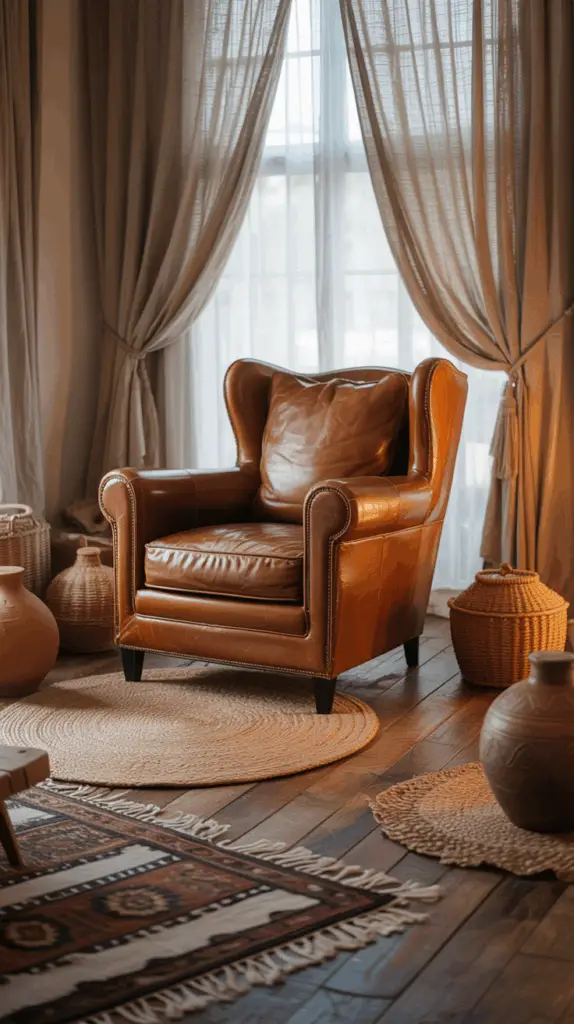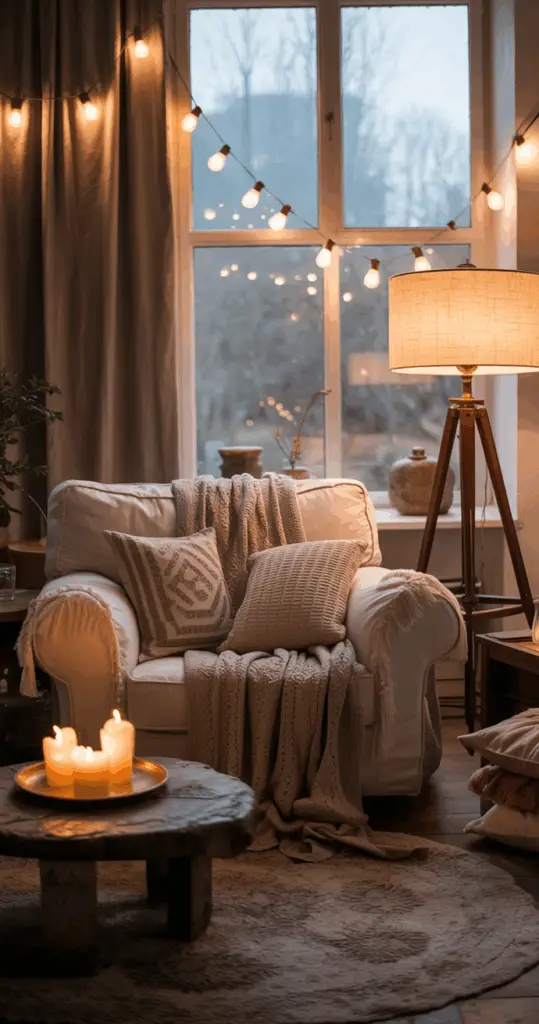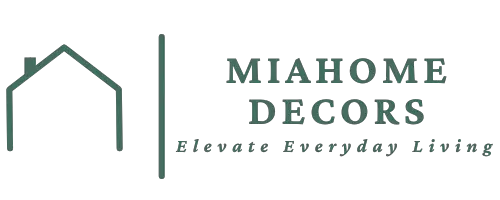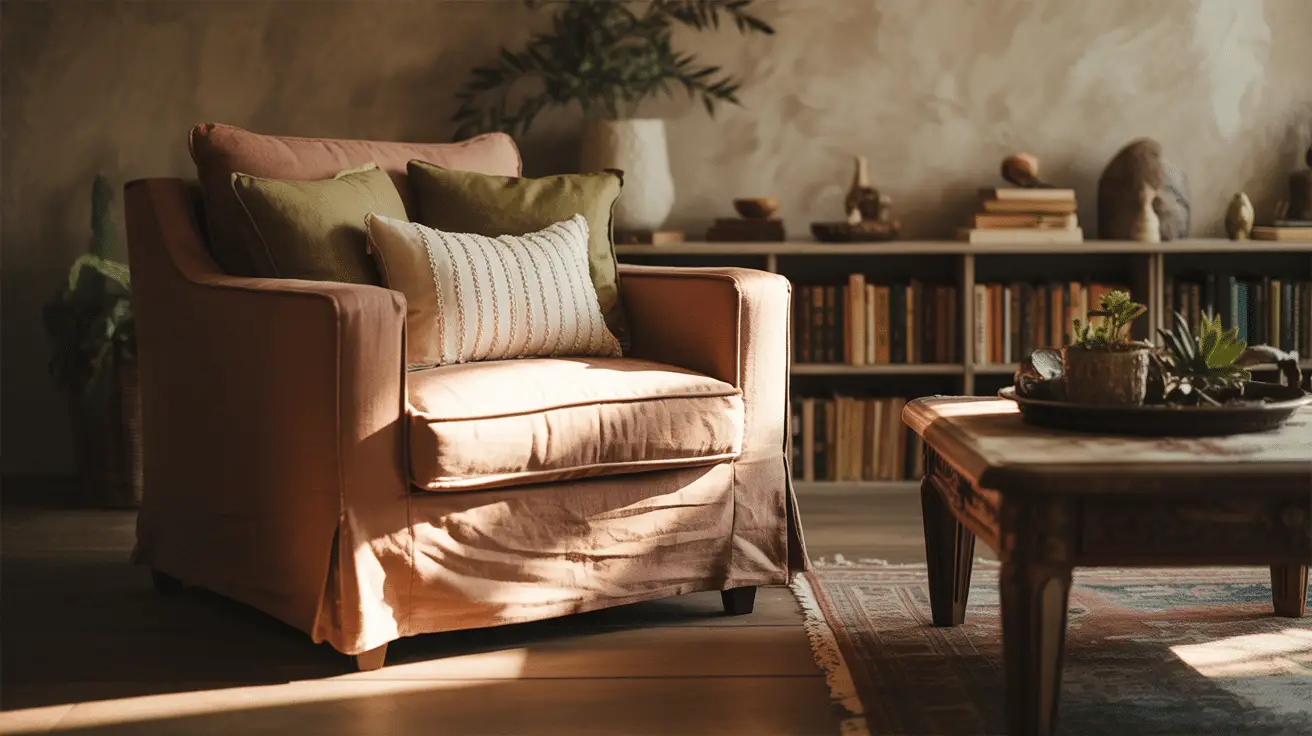How to Design a Moody, Cozy Boho Living Room with Ambient Lighting
Table of Contents
Layering Mood and Comfort: Why the Boho Living Room Is Getting a Glow-Up
Soft textures. Muted tones. Ambient lights that feel like dusk on demand. The modern boho living room has evolved—still eclectic and soulful, but now infused with a moody coziness that turns everyday lounging into a dreamy retreat.
As the line between relaxation and refuge becomes more important in interior design, more homeowners and renters are embracing the “moody cozy boho” aesthetic. According to Pinterest’s 2024 Home Trends Report, searches for “boho ambient lighting” and “cozy boho living room” have increased by over 150%. The appeal? It’s all about creating a space that feels lived-in and layered—with personality, but never overdone.
In this guide, we’ll dive into how to craft the perfect moody, cozy boho living room using lighting, textiles, textures, and intentional decor. Whether you’re starting from scratch or refining an existing space, you’ll learn how to blend atmospheric lighting with tactile design to shape a living room that exudes warmth, artistry, and calm.
From earthy palettes to layered rugs, sculptural candles to macramé wall hangings, you’ll get practical design tips to elevate your boho style without losing comfort. And most importantly, we’ll explore how ambient lighting—warm, layered, and low—sets the tone for your entire space.
Choosing the Perfect Color Palette for a Moody Boho Atmosphere
Color is the foundation of any moody boho living room, and the key lies in embracing warm, earthy hues while deepening the tone to achieve a more intimate, grounded feel. Traditional boho palettes include terracotta, sage green, ochre, and ivory—but when you’re leaning into “moody,” you take these colors a few shades deeper.
Think espresso brown, burnt umber, deep olive, muted plum, or even charcoal. The goal is to envelop the room in tones that feel soulful and layered, while still inviting. Darker colors on walls or textiles absorb light and naturally create a cozy ambiance, especially when paired with soft, ambient lighting.
Use neutral backdrops like warm greys, soft taupe, or creamy white to avoid visual heaviness, then layer richer tones through textiles, wall art, and decorative accents.
Table: Moody Boho Color Combinations to Try
| Base Color | Accent Color 1 | Accent Color 2 | Mood Effect |
| Warm Charcoal | Burnt Orange | Antique Brass | Sophisticated and earthy |
| Deep Olive | Terracotta | Cream | Natural, grounded, calming |
| Soft Plum | Rust | Ivory | Romantic and cozy |
| Dusty Rose | Forest Green | Sand | Feminine with balance |
| Espresso Brown | Ochre | Linen White | Rich and rustic warmth |
Layering Textures for Visual Depth and Tactile Comfort
Texture is non-negotiable when designing a cozy boho space. It’s what transforms a room from “decorated” to “felt.” In a moody boho living room, texture works to both contrast and complement the darker tones, helping avoid flatness while adding personality.
Incorporate a mix of textiles: soft woven throws, chunky knit pillows, raw linen curtains, and layered rugs—perhaps a jute base topped with a patterned Moroccan-style rug. Each piece should invite touch and give the eye something to explore.
Wood elements, especially reclaimed or raw-edge pieces, reinforce warmth and naturalism. Macramé wall hangings, pottery, vintage ceramics, and distressed leathers add age and authenticity to the room.
Don’t be afraid to mix eras and materials—boho is about personal expression. The only rule? Nothing should feel too new, too polished, or too sterile.
Table: Texture Elements That Define a Cozy Boho Space
| Material Type | Suggested Item | Visual/Physical Impact |
| Woven Fabrics | Cotton throws, macramé art | Adds softness and handmade charm |
| Leather | Vintage poufs, accent chairs | Introduces aged warmth |
| Wood | Coffee tables, open shelving | Grounds the space, rustic tone |
| Natural Fibers | Jute or sisal rugs | Earthy base, textural underfoot |
| Ceramic/Stone | Candleholders, planters | Brings contrast and earthiness |

Ambient Lighting: The Heart of the Moody Boho Living Room
In moody boho interiors, ambient lighting does more than illuminate—it defines the entire atmosphere. Rather than relying on overhead fixtures or harsh bulbs, opt for layered lighting that glows gently from multiple sources.
Start with warm-toned bulbs (ideally 2700K or lower) to avoid the starkness of cool white light. Use floor lamps with fabric or rattan shades to create soft pools of light. Add table lamps with brass or ceramic bases, and complement them with wall sconces, string lights, or even battery-operated candles for layered glow.
Fairy lights can be draped along shelves or windows for whimsical flair, while LED strips behind mirrors or under floating shelves add subtle visual interest. Salt lamps and lantern-style lighting create organic shapes of light and shadow that play beautifully in a textured boho space.
Ambient light not only enhances mood—it also flatters your color palette and makes your textures come alive.
Table: Ambient Lighting Sources and Where to Use Them
| Lighting Type | Placement | Lighting Effect |
| Floor Lamp | Beside seating areas | Broad, diffused illumination |
| Table Lamp | On side tables, consoles | Intimate glow |
| String/Fairy Lights | Draped on walls or shelves | Whimsical and soft |
| Lanterns/Candles | Corners, coffee tables | Flickering coziness |
| LED Strips | Behind mirrors/shelves | Highlighting features subtly |

Furniture that Balances Comfort and Character
Boho design isn’t about matching furniture—it’s about creating a collection of pieces that tell a story. For a cozy and moody twist, choose furniture that feels lived-in, soft-edged, and soulful.
Low-slung sofas in deep hues like cinnamon, rust, or olive work beautifully against darker walls. Opt for natural materials—like rattan, distressed leather, or reclaimed wood—and shapes that are more organic than geometric.
Incorporate accent chairs with carved wood details or textile covers. Poufs and floor cushions not only add flexible seating, but also reinforce the layered boho aesthetic.
Avoid anything overly modern or polished. Choose pieces that look and feel comfortable, as if they’ve been loved for years.
Table: Furniture Essentials for a Moody Cozy Boho Room
| Furniture Piece | Style Suggestion | Why It Works |
| Sofa | Deep, cushioned in warm fabric | Invites relaxation, color anchor |
| Accent Chair | Carved wood or textile print | Adds detail and cultural texture |
| Coffee Table | Reclaimed wood, organic shape | Rustic and grounding |
| Poufs/Cushions | Leather or woven fabric | Flexible, tactile seating |
| Side Tables | Antique or artisan-style | Adds unique, collected feel |
Boho Decor Details That Elevate Without Overcrowding
Decor is where the boho spirit truly shines—but in a moody cozy space, restraint is key. You want layers, yes, but not clutter. Each item should feel intentional, meaningful, and in tune with the room’s mood.
Prioritize decor with a story or handcrafted feel. Choose artisanal ceramics, vintage finds, handwoven textiles, and sculptural vases. Wall hangings like woven tapestries or textured art pieces can fill visual space without overwhelming.
Books, crystals, dried florals, and curated trinkets add personality—but group them in styled vignettes rather than spreading them throughout the room. Always leave breathing space to let light, shadow, and texture be the stars.
Table: Minimal Yet Expressive Boho Decor Items
| Item Type | Ideal Material/Style | Purpose in the Room |
| Wall Art | Woven, textile, or abstract | Adds visual softness |
| Planters | Terracotta or ceramic | Introduces earthiness |
| Textiles | Throws, pillows, tapestries | Visual and tactile layering |
| Candles | Sculptural, scented | Ambient glow, scent dimension |
| Objects | Crystals, books, small statues | Personality and storytelling |
How to Create a Functional Layout That Feels Effortlessly Relaxed
The layout of a cozy boho living room should encourage movement and connection while maintaining a sense of flow. You want it to feel casual, but not chaotic.
Start by identifying a central focal point—this might be a fireplace, a large piece of art, or even your seating area with layered lighting. Anchor the layout around a soft area rug, then float your sofa rather than pushing it against the wall if the room allows. This encourages a conversational and intimate setup.
Use furniture and decor to define zones. A floor lamp beside a reading chair creates a nook, while a low bench or credenza can subtly divide the space. Keep walking paths open and furniture scale appropriate—oversized pieces can make cozy feel cramped.
Boho is about energy as much as style. Your room should invite rest, creativity, and warmth.
Table: Layout Tips for Boho Living Room Flow
| Zone | Key Elements | Design Intent |
| Main Seating Area | Sofa, rug, coffee table | Anchors social space |
| Cozy Nook | Chair, lamp, side table | Reading, relaxation |
| Entry or Divider | Low console, plants | Defines space without walls |
| Lighting Layer | Spread lighting throughout | Even, cozy illumination |
| Negative Space | Breathing room between pieces | Visual calm, better flow |
Conclusion: Designing Soulful Spaces with Light, Texture, and Heart
A moody cozy boho living room isn’t built overnight—it’s collected, curated, and layered with intention. It combines atmosphere with texture, personality with comfort, and decor with depth. Through warm lighting, earthy palettes, tactile furnishings, and expressive decor, you can shape a space that feels as good as it looks.
Whether you live in a city loft or a countryside cottage, the essence of moody boho design remains the same: relaxed, soulful, and rich with life. With ambient lights guiding the mood, and layers of texture telling your story, your living room becomes more than a place to sit—it becomes a place to feel.

